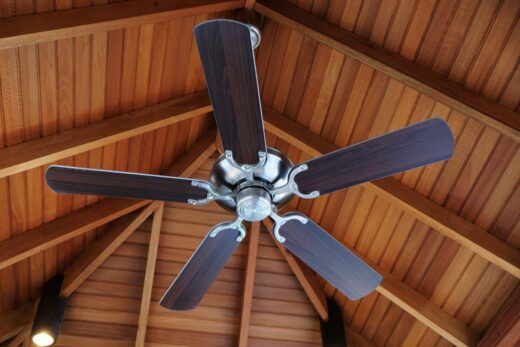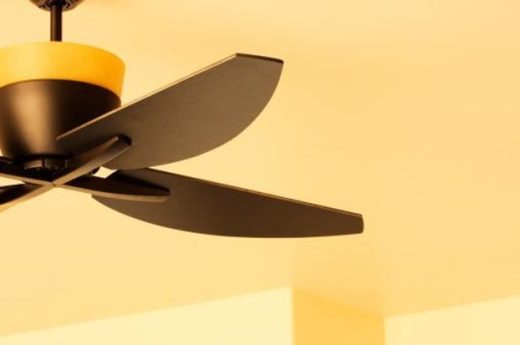Smart ceiling fans upgrade guide, Home cooling advice, Building comfort tips
Why All Homeowners Need to Upgrade to Smart Ceiling Fans
3 November 2023
If you own your home, you should know by now the incredible potential of ceiling fans. Instead of adjusting your thermostat and running your air conditioner or furnace — both of which demand excessive amounts of energy — you can maintain a more comfortable temperature inside your home simply by turning on a ceiling fan, which costs fractions of pennies on your energy bill to run every day.
But, what if there were a way to make your ceiling fan function even more efficiently? There is: smart technology. More and more ceiling fan manufacturers are integrating smart tech to ensure that their newest fan models can deliver even greater efficiency and comfort in the coming decades. If you are curious about how this smart gadget might improve your home, read on for everything you need to know about the revolutionary smart ceiling fan.
What Is a Smart Ceiling Fan?
At its simplest, a smart ceiling fan is a ceiling fan that looks and operates like any other ceiling fan, delivering improved airflow around a space to improve comfort, with the added feature of wireless connectivity. Equipped with smart technology, smart ceiling fans can connect to a user’s devices through a home’s wireless network, so the user can control the speed of the fan, the lights and other features from anywhere. Users can also set schedules for their smart ceiling fans using their connected devices, which means that fans will automatically turn on and off according to a user’s predetermined needs, eliminating energy waste and ensuring maximum comfort with minimal effort.
How Do Smart Ceiling Fans Work?
Most smart ceiling fans run on the same tried-and-true engineering that have made ceiling fans such beloved fixtures in the home. They use electricity to power a motor that spins carefully angled blades, which funnel air up or down depending on the season. However, in addition to this reliable engineering, smart fan motors are also connected to the home’s wireless network, providing users unprecedented remote control.
Different ceiling fan manufacturers manage their smart ceiling fan technology in different ways. Some require users to download bespoke apps on their mobile devices to interact with their smart ceiling fans, while other fans can integrate with broader smart home networks to make environmental controls much simpler and easier to maintain. Depending on the complexity of your smart network, you might research how specific smart fan models work before making your purchase.
What Are the Benefits of Smart Ceiling Fans?
Many homeowners might be loath to invest in replacing ceiling fans that are perfectly good with smart alternatives, but the truth is that a smart ceiling fan offers many noteworthy benefits that make them attractive to the busy, energy- and cost-conscious homeowner of today.
The potential for great energy savings is perhaps the most appealing benefit of smart ceiling fans. All ceiling fans have the potential to affect the perceived temperature of a space by up to 4 degrees Fahrenheit — but only if there is someone in the space to feel the airflow. A ceiling fan running in an empty room provides no benefits; it merely consumes energy. However, because of the hassle of turning a traditional ceiling fan on and off, many homeowners simply allow their ceiling fans to continue running while they are at work, completing errands or otherwise away from the house. In contrast, with a smart ceiling fan, homeowners can automate when ceiling fans turn on and off — and what settings they maintain — so no energy is wasted on empty spaces.
Which Smart Ceiling Fans Are Best?
Every homeowner will have preferences regarding style, functionality and price, which can impact which smart ceiling fans are the best choice for them. You might list out your priorities in a smart ceiling fan before you begin shopping, so you know how to narrow your search to obtain the features you need. Some details you might determine ahead of time include:
Airflow. The fan itself should be large enough to move a noticeable amount of air around the room. You can measure your room and look up the amount of cubic feet per minute (CFM) you need in a fan.
Energy efficiency. You should look for the lowest wattage fan you can find with your needed CFM to save on energy consumption.
Light kit. If you need an overhead light solution in addition to airflow, you need to find a fan that either has a light included already or has the possibility of a light kit attachment.
Ceiling fans are remarkable fixtures, and they are made even more remarkable with the addition of smart technology. You can bring your ceiling fans into the 21st century by upgrading to a smart ceiling fan today.
Comments on this guide to Smart ceiling fans upgrade at home article are welcome.
Home Ceiling Fans
Ceiling Fans Posts
Enhance your Home’s Architecture with a Ceiling Fan

Ducted vs Split Systems for Home Aircon
Air Conditioners
Air Conditioners Posts
Enhance your Home’s Architecture with a Ceiling Fan

What are the benefits of air conditioning services
Building Articles
Residential Architecture
Comments / photos for the Smart ceiling fans upgrade at home advice page welcome






